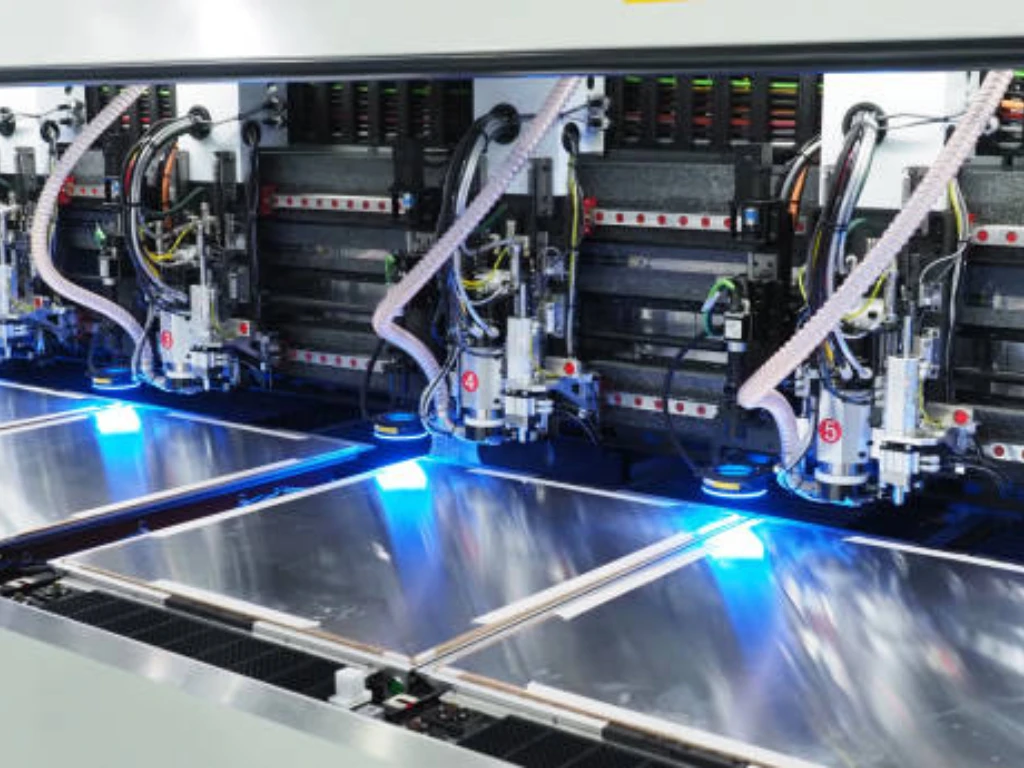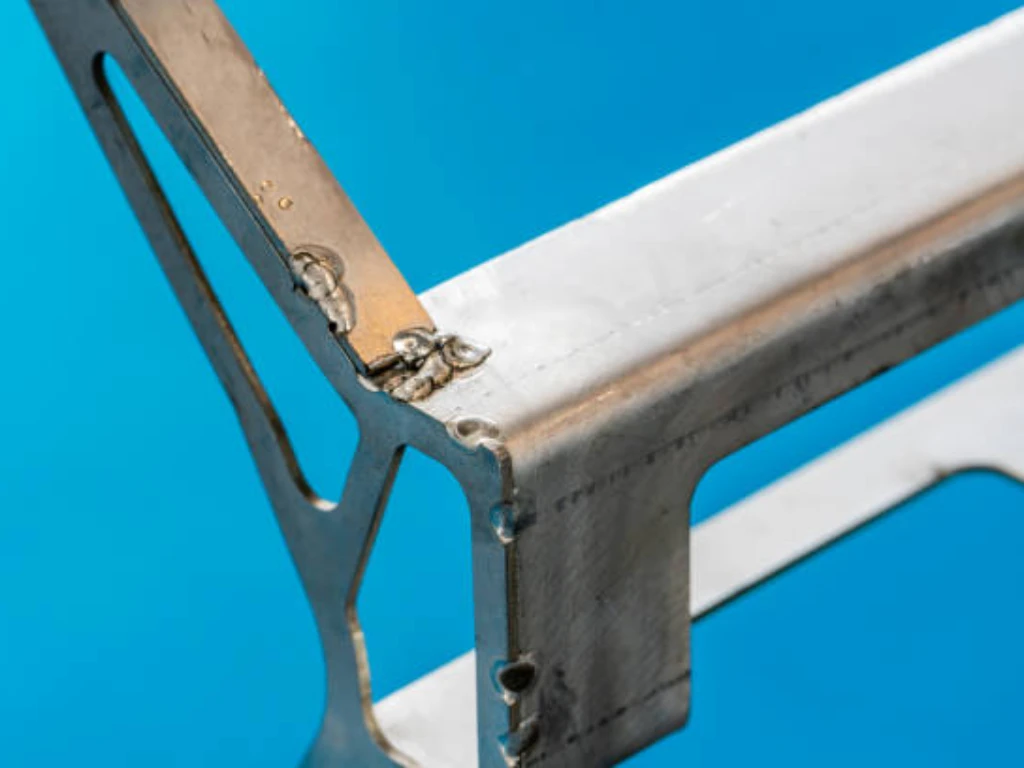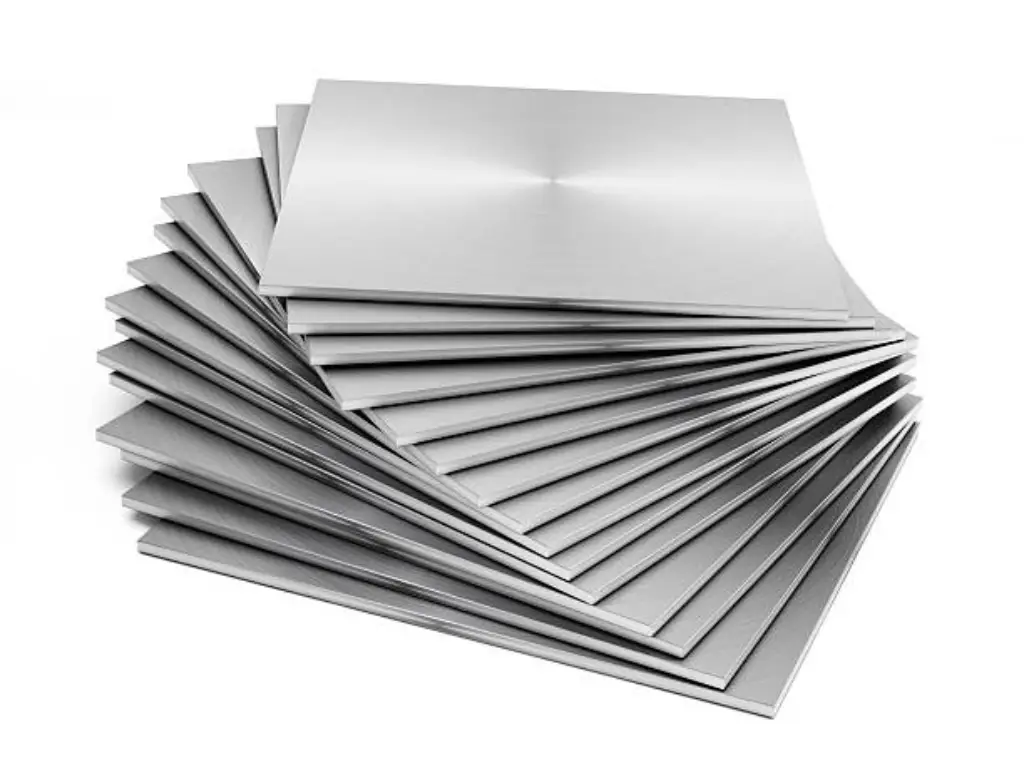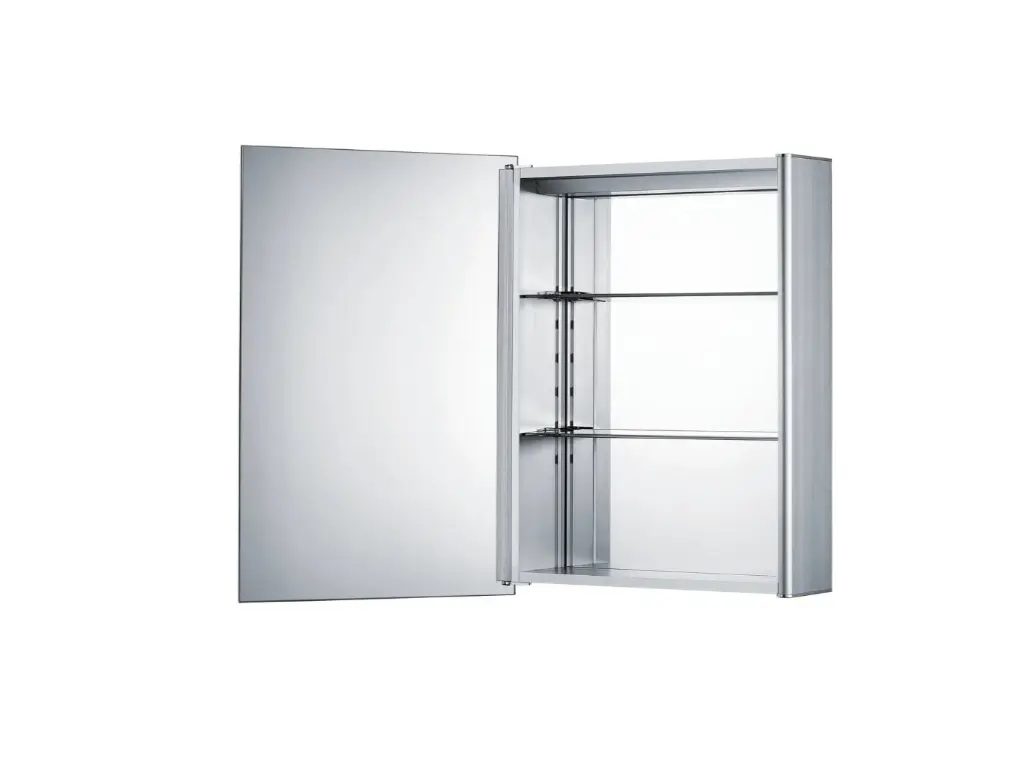
What Is Sheet Metal Assembly?
The engineering process of joining two or more sheet metal parts to form a finished product or sub-assembly is called sheet metal assembly. It is a basic phase in production that comes after metal fabrication processes like laser cutting, bending and sheet metal forming. The quality and suitability of the assembly methods employed is directly related to the integrity, functionality, cost and life span of countless products, whether it is the consumer electronic parts in our hands, the vehicles we drive, or the industrial machinery that powers our world.
The decision on the right assembly strategy is not a minor one that can be made at the end of the production. It is a very important design aspect that has far-reaching consequences on the lifecycle of a product. A good selection can significantly lower the cost of manufacturing, increase the rate of production, and increase the structural strength and serviceability. On the other hand, a poor decision may result in product failure, bloated budgets, production bottlenecks, and poor end-user experience.
This guide gives a definitive summary of the main methods of sheet metal assembly process. It will look at the mechanics of how each method works, give a direct comparison of the capabilities of each method and provide critical design principles to be used by engineers, designers and sheet metal fabricators. The goal is to provide you with the basic knowledge that you will need to make informed, effective decisions with regard to your particular application so that your end product is not just joined, but assembled intelligently and robustly.
Core Techniques in Sheet Metal Assembly
The assembly methods that can be used in sheet metal fabrication are varied and each has a different profile of strengths, weaknesses, and optimal applications. They can be divided into thermal processes such as welding, mechanical processes with fasteners, and new methods of deforming the material or chemically bonding it. Technical mastery requires an understanding of the entire spectrum of various techniques.
Welding
Welding is a manufacturing method that involves the joining of materials, typically metals, by melting the parts together and permitting them to cool, which causes them to fuse. It forms permanent, high-strength joints that are frequently stronger or equal to the base metal.
MIG Welding
Gas Metal Arc Welding (GMAW) or MIG welding is a quick and effective process that involves a continuously fed consumable wire electrode and a shielding gas to cover the weld pool against atmospheric contamination. It is very flexible and can be used with many types of metals, such as carbon steel, stainless steel and aluminum. MIG welding is a standard option when high volume production is required, or when thicker sections of flat metal sheets are to be joined and speed is a factor. The welds produced are robust and might need post-processing, including grinding, to produce a smooth finish.
TIG Welding
Gas Tungsten Arc Welding (GTAW) or TIG welding is a process that employs a non-consumable tungsten electrode to form the arc and an inert shielding gas. A filler rod is usually added to the weld pool manually. Compared to MIG, TIG welding is a slower and more accurate process. It provides unmatched control, which leads to very clean, high-quality, and aesthetically pleasing welds that frequently do not need any post-processing. It is the most popular way to process thin-gauge materials (aluminum and stainless steel included) and where cosmetic appearance and accuracy are the most important, as in aerospace, architectural metalwork, and high-end consumer goods.
Spot Welding
Resistance Spot Welding (RSW) is a fast technique of joining overlapping metal sheets. It operates by flowing a high electrical current through the metal sheets using two copper alloy electrodes that clamp the sheets together. The opposition to the flow of current produces a high localized heat which melts the material and fuses a small fused nugget between the sheets. It is very quick, does not need any filler material and is easily automated, so it is the most common assembly process in the automotive industry to assemble vehicle bodies-in-white. Its primary drawback is that it produces localized joints instead of a seam.
Laser Welding
Laser Beam Welding (LBW) is a method of joining materials that utilizes a concentrated heat source, a high-density laser beam. It creates deep narrow welds and a very small heat-affected zone (HAZ). This reduces thermal distortion, which is an important benefit when using heat-sensitive components or thin materials. Laser welding is very fast, accurate and can be applied to join a very broad range of materials, including those that are hard to weld using conventional techniques. It is expensive to purchase initially, but it is faster and of high quality in high-volume precision applications.
Stud Welding
Stud welding is a specialised, semi-automatic arc welding process that is used to fix a threaded stud, pin or fastener to a metal workpiece. One of the electrodes is the stud itself. It is a non-destructive process that produces a high strength, one-sided weld without leaving a mark on the back of the workpiece. This renders it priceless in applications where a clean exterior finish is needed, e.g., on equipment enclosures, panels and shipbuilding, since it does not require drilling, tapping or riveting.
Robotic Welding vs. Manual Welding
The choice of robotic or manual welding depends on volume, complexity and repeatability. Manual welding, which is done by a skilled operator, provides the greatest flexibility in custom work, complex shapes, and low-volume production. A human welder is able to adjust to irregularities and fine tune as they go. In robotic welding, the weld is done by automated systems. It offers unrivaled speed, accuracy and repeatability in high-volume production of standardized parts. Although the initial cost is high, robotic systems save on labor, eliminate human error and provide high quality welds 24 hours a day.

Mechanical Fastening
Mechanical fastening involves physical hardware to clamp or join parts together. These are usually non-thermal and are often disassembly-friendly, and are therefore necessary when a product needs service or access.
Riveting
Riveting is a very ancient and trusted form of mechanical fastening. A rivet is a metal pin with a head on one end that is inserted through holes in two or more pieces that are aligned. The tail end is then deformed, or upset, with a hammer or rivet gun, forming a second head which permanently clamps the parts together. A common variant is the blind rivet, or pop rivet, which can be installed on one side of the workpiece, and is therefore suitable where access is limited. Riveting offers superior vibration and shear strength.
Threaded Fasteners
Threaded fasteners are the most common form of mechanical joining, prized for their strength, reliability, and serviceability.
- Screws, Nuts, and Bolts: These create strong, clamped joints that can be easily disassembled and reassembled. Proper selection depends on the required clamping force, material compatibility, and environmental exposure.
- Inserts: Threaded inserts are used to provide durable machine threads in materials that are too soft or thin to support them directly, such as aluminum or plastic components attached to a sheet metal frame.
- PEM® Fasteners: This category of self-clinching fasteners is a cornerstone of modern sheet metal design. PEM fasteners (including nuts, studs, and standoffs) are pressed into a precisely sized hole. The parent material cold-flows into a specially designed groove on the fastener, locking it permanently into the sheet. This provides strong, permanent threads in metal sheets that are too thin to be tapped, revolutionizing the assembly of electronics enclosures, server racks, and other complex devices.
Rivetless Joining (Clinching & Self-Clinching)
Clinching is an innovative cold-forming process that joins sheet metal parts by creating a localized mechanical interlock. It uses a punch and a die to draw the metal sheets into a small indentation, forcing the material to spread outwards and form a durable, button type joint. No fasteners or heat are required. The process is extremely fast, low-cost, and produces no fumes or sparks. It is an excellent choice for joining pre-coated or pre-painted metals, as the protective surface is not burned away.
Adhesive Bonding
The contemporary industrial adhesives, e.g. epoxies, acrylics, and polyurethanes, provide an effective alternative to the conventional joining techniques. Adhesive bonding spreads the stress uniformly across the bonded surface, and removes the stress concentrations that exist around welds or fasteners. This enhances fatigue resistance and enables dissimilar materials to be joined, e.g. metal to plastic or composite. It also forms a continuous, sealed joint that may be used to prevent corrosion and to dampen vibration. Effective bonding is very sensitive to careful surface preparation and control of the curing process.
Forming & Integrated Joining
These ingenious methods exploit the geometry of the sheet metal components themselves to form joints, and eliminate the need to use separate hardware altogether, and in many cases make ease of assembly better. These are examples of sheet metal forming without the use of an external fastener.
Hemming & Folding
A hem is a fold made along the edge of a sheet metal part to form a safe, smooth edge or to connect two sheets. In a hem joint, one sheet is folded over the edge of another. This is typical in the automotive industry on door panels and hoods and appliance manufacturing.
Tab and Slot Assembly
This is a self locating design feature where tabs are made on one side that fit into slots on the other. Tab and slot designs make sure that parts fit together with a perfect fit and then are welded or otherwise permanently joined. This makes fixturing much easier, assembly time shorter, and dimensional accuracy better. Tabs may be bent or twisted in others to form a semi-permanent mechanical lock. This can also help reduce the need for redundant tabs.
Snap Fit
A snap-fit joint utilizes the flexibility of the material to create an interlocking connection. It typically involves a protruding feature on one part (e.g., a cantilevered hook) that deflects during insertion and “snaps” back to engage with a feature on the mating part. This relies on the spring force of the material. It is an extremely fast and low-cost assembly method, ideal for parts that may need to be opened for service, such as battery covers or access panels for internal components, depending on the frequency of use.
Tongue and Groove
Similar to tab and slot, a tongue and groove joint involves a raised ridge (tongue) on one part fitting into a recessed channel (groove) on another. This creates a strong interlocking seam that provides excellent alignment and can add significant stiffness to the assembly, often used in constructing chassis and frames.
Choosing Your Method: A Head-to-Head Comparison
Selecting the optimal assembly method requires a careful trade-off between technical requirements, production realities, and budget constraints. The following table provides a direct comparison of the primary techniques across key decision-making criteria.
| Feature | Welding (General) | Mechanical Fastening | Clinching (Rivetless) | Adhesive Bonding | Forming &Integrated |
| Cost | $$ (Labor/Energy) | $$ (Hardware) | $ (No Consumables) | $$ (Adhesive/Prep) | $ (Design-In) |
| Strength | Excellent (Permanent) | Good to Excellent | Good | Good (Shear) | Fair to Good |
| Assembly Speed | Medium to Very Fast | Medium | Very Fast | Slow (Curing Time) | Very Fast |
| Applicable Materials | Carbon Steel, Stainless Steel, Aluminum, Copper, Alloys | Metals, Plastics, Composites, PCB, Wood | Mild Steel, Aluminum, Ductile Alloys | Metals, Plastics, Composites, Glass, Rubber | Mild Steel, Aluminum, Copper |
| Applicable Thickness | 0.5–10 mm (Wide Range) | 0.5–12 mm (Wide Range) | 0.5–3 mm (Thin–Medium) | <0.2–10+ mm (All) | 0.5–3 mm (Thin–Medium) |
| Required Equipment | High (Welder/Gas/Laser) | Low to Medium (Tools/Fasteners) | Medium (Press/Tooling) | Low (Dispenser, Oven optional) | Medium (Press Brake/Forming Dies) |
| Disassembly | No (Destructive) | Yes (Most Types) | No (Destructive) | No (Destructive) | No (Destructive) |
| Aesthetics | Fair to Excellent (TIG, Laser Welding) | Fair (Visible Heads, unless concealed) | Good (One-sided Appearance) | Excellent (Invisible Bond Line) | Good to Excellent (Integrated Design Features) |
Design Tips for Sheet Metal Assembly
Good design to assembly (DFA) is not a afterthought, it is a competency. Incorporating assembly concerns into the initial phases of design will result in enormous savings in cost, quality, and throughput.
- Minimize Part Count: The easiest method of reducing the cost of assembly is to remove assembly operations. Explore whether several components can be integrated into one more complex formed component.
- Standardize Fasteners: Wherever possible, use the same type and size of fastener (screws, nuts, rivets) throughout an assembly. This makes inventory easier, fewer tools are needed and the chance of operator error is minimized.
- Use Self-Locating Features: Design components that self-align. Tab and slot, tongue and groove and nesting features minimize the use of costly and complicated fixtures, accelerating assembly and enhancing precision.
- Ensure Tool Access: One of the most frequent design mistakes is to place a fastener or a weld in a place that is not accessible to the needed tool. Always imagine how the assembly will be done and make sure that there is sufficient clearance of hands, wrenches, drills and weld heads.
- Design to Unidirectional Assembly: Design the assembly in such a way that all the parts can be added in one direction, usually top-down. This makes manual and robotic assembly easier, and there is no need to rotate and reorient the workpiece.
- Think Tolerances: Learn how the dimensional tolerances of the individual parts will stack up in the end assembly. Inadequate tolerance analysis may result in ill-fitting parts. Make sure that the hole sizes are properly specified for the selected fastener, particularly press-fit fasteners such as PEM fasteners.
Material Selection for Sheet Metal Assembly
The choice of sheet metal material fundamentally influences the choice of assembly method.
- Carbon Steel: This is the workhorse of the industry. It is strong, low-cost, and readily weldable using almost any technique. It is an excellent candidate for all types of mechanical fastening and forming. Its primary drawback is its susceptibility to corrosion if not properly coated or painted.
- Stainless Steel: Valued for its corrosion resistance and aesthetic appeal, stainless steel can be joined by most methods. However, it is more challenging to weld than carbon steel, often requiring the precision of TIG welding to maintain its properties and appearance. It is also harder and can cause more tool wear during mechanical fastening operations.
- Aluminum: Lightweight and corrosion-resistant, aluminum is critical for the aerospace and automotive industries. Its high thermal conductivity and protective oxide layer make welding more complex, typically requiring specialized AC TIG or MIG processes. It is a soft material, so care must be taken to avoid stripping threads; the use of threaded inserts or self-clinching fasteners is highly recommended.
Avoiding Common Sheet Metal Assembly Pitfalls
Awareness of common failure modes is the first step toward preventing them.
Pitfall: Weld Distortion (Warpage): The intense, localized heat of welding causes uneven expansion and contraction, which can warp thin materials.
- Prevention: Use robust fixturing to hold parts securely during welding and cooling. Employ a planned sequence of short welds (stitch welding) instead of one long continuous weld. Use the lowest possible heat input required for proper fusion and consider a low-distortion process like laser welding.
Pitfall: Incorrect Hole Preparation for Fasteners: Holes that are too large or too small for self-clinching fasteners or rivets will result in a weak joint that fails under load.
- Prevention: Strictly adhere to the fastener manufacturer’s specifications for hole size, tolerances, and minimum distance from an edge. Use sharp, high-quality punches and dies to create clean, precise holes.
Pitfall: Fastener Stripping or Pull-Through: Overtightening a screw in a thin or soft material can strip the threads or pull the fastener head through the sheet.
- Prevention: Use torque-controlled drivers to apply the correct amount of force. Increase the bearing surface under the fastener head by using a washer. For critical joints, specify the use of stronger self-clinching nuts instead of tapped holes.
Pitfall: Adhesive Bond Failure: An adhesive joint fails due to poor surface preparation, leading to delamination.
- Prevention: Follow a strict protocol for surface cleaning and abrasion to remove all oils, dirt, and oxides. Ensure the correct adhesive is chosen for the substrates and that it is applied and cured according to the manufacturer’s precise instructions regarding temperature and time.

Future Trends and Your Next Project
The field of sheet metal assembly is continuously evolving. We are seeing a rise in hybrid techniques, such as “weld-bonding,” which combines spot welding with adhesives to create joints that are both stiff and highly resistant to fatigue. Advances in fiber laser technology are making high-speed, low-distortion welding more accessible. In the push for lightweighting, particularly in the electric vehicle sector, adhesive bonding and advanced mechanical fastening are replacing traditional welding to join the complex mix of high-strength steels, aluminum, and composite materials.
The fundamental principles, however, remain constant. A successful assembly is born from a deep understanding of the core techniques, a disciplined design approach, and a collaborative relationship between designers and fabricators. As you embark on your next project, use this guide as your foundation. Analyze the trade-offs, design with intent, consider the lead times for different methods and the implications of material thickness and desired surface finish, such as powder coating, and choose the method that delivers the optimal balance of performance, quality, and cost for your unique application.
Partner with TZR: Your Expert in Precision Sheet Metal Assembly
Understanding the theory of sheet metal assembly is the first step. Bridging the gap between design theory and flawless production takes more than equipment—it takes a true manufacturing partner. At TZR, we turn complex sheet metal ideas into production-ready, high-precision components built for your success.
We work across every stage of the product lifecycle—from early design consultation to full-scale assembly—for industries where performance is non-negotiable, including automotive, medical devices, 3D printing, and renewable energy. Our deep experience with steel, stainless steel, aluminum, and copper means we know how to optimize each material for strength, formability, and cost-efficiency.
We don’t just meet industry standards—we exceed them. With a 98% first-pass yield and ISO-level quality processes, you can trust every part we deliver. Our collaborative approach includes free Design for Manufacturing (DFM) reviews and fast, accurate quotes within two hours, helping you reduce risk and accelerate timelines.
When precision matters and speed is critical, partner with TZR. Let’s bring your next design to life—with clarity, confidence, and unmatched craftsmanship.




